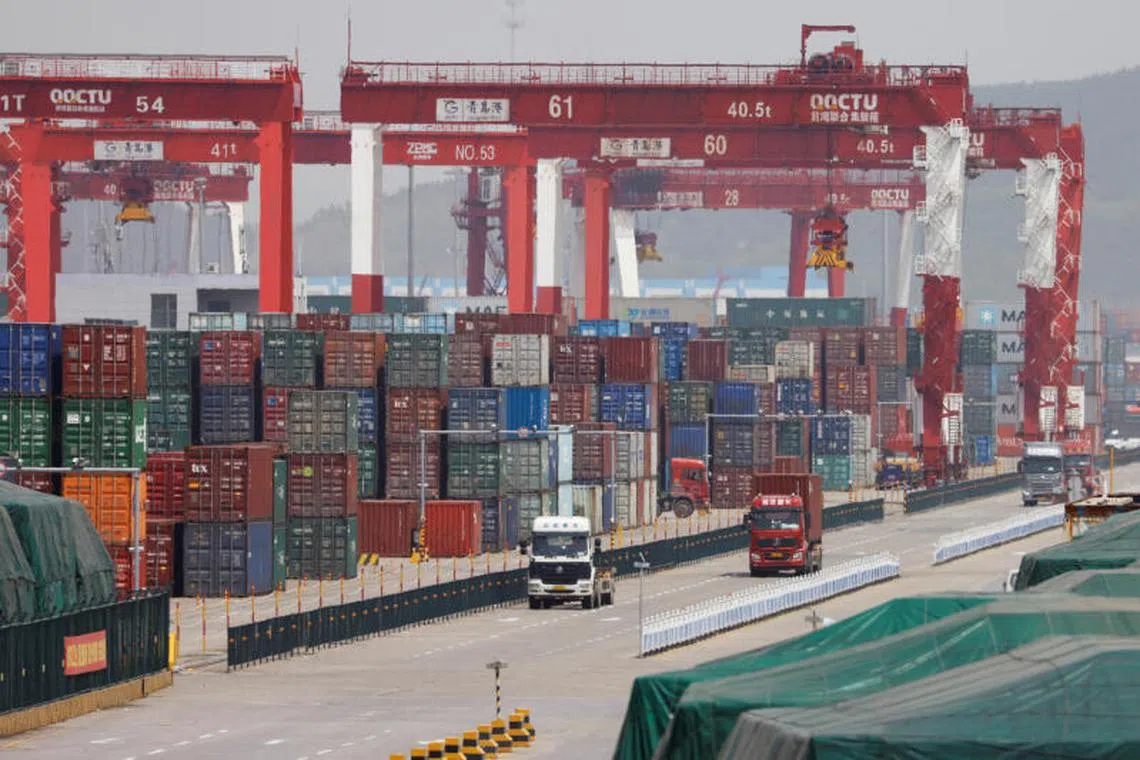China exports, imports dive in November on feeble demand, domestic Covid-19 woes
Sign up now: Get ST's newsletters delivered to your inbox

Exports contracted by a sharper 8.7 per cent in November from a year earlier, while imports fell a bigger 10.6 per cent.
PHOTO: REUTERS
Follow topic:
BEIJING – China’s exports and imports shrank at a much steeper-than-expected pace in November, as feeble global and domestic demand, Covid-19-induced production disruptions and a property slump at home piled pressure on the world’s second-biggest economy.
Exports contracted 8.7 per cent in November from a year earlier, a sharper fall from a 0.3 per cent loss in October, and marked the worst performance since February 2020, official data showed on Wednesday. They were well below analysts’ expectations for a 3.5 per cent decline.
Outbound shipments have lost steam since August as surging inflation, sweeping interest rate increases across many countries and the Ukraine crisis have pushed the global economy into the brink of recession.
Exports are likely to shrink further over coming quarters, Mr Julian Evans-Pritchard, senior China economist at Capital Economics, said in a note to clients.
“Outbound shipments will receive a limited boost from the easing of (China’s) virus restrictions, which are no longer a major constraint on the ability of manufacturers to meet orders,” he said.
“Of much greater consequence will be the downturn in global demand for Chinese goods due to the reversal in pandemic-era demand and the coming global recession.”
Overall, the bleak data also underlined the impact of fresh Covid-19 restrictions across many Chinese cities, including manufacturing hubs Zhengzhou and Guangzhou, as infections spiked in November.
Apple supplier Foxconn said that revenue in November dropped 11.4 per cent year on year,
Freight rate indexes from Chinese ports to Europe and the United States west coast were down by 21.2 per cent and 21 per cent in November from October respectively, according to the Shanghai Shipping Exchange, highlighting the weakening exports trend due to poor external demand conditions.
The widespread Covid-19 curbs hurt importers too. Inbound shipments were down sharply by 10.6 per cent from a 0.7 per cent drop in October, weaker than a forecast 6 per cent decline. The downturn was the worst since May 2020, partly also reflecting a high year-earlier base for comparison.
This resulted in a narrower trade surplus of US$69.84 billion (S$95 billion), compared with a US$85.15 billion surplus in October. Analysts had forecast a US$78.1 billion surplus.
The government has responded to the weakening economic growth by rolling out a flurry of policy measures over recent months, including cutting the amount of cash that banks must hold as reserves and loosening financing curbs to rescue the property sector.
But analysts remain sceptical the steps could achieve quick results, as Beijing has not announced a full reopening from Covid-19 containment yet.
Almost three years into the pandemic, some local governments in recent days began to relax some lockdowns, quarantine rules and testing requirements that have exacted a heavy economic toll and caused widespread frustration and fatigue.
“The shift away from zero-Covid and step up in support for the property sector will eventually drive a recovery in domestic demand, but probably not until the second half of next year,” Mr Evans-Pritchard said.
With the Chinese yuan already down sharply this year, policymakers’ room to manoeuvre is also limited, as hefty monetary policy stimulus at home at a time of rapidly rising interest rates globally could trigger large scale capital outflows.
The Ukraine war, which sparked a surge in already high inflation globally, has intensified geopolitical tensions and further undermined the business outlook.
China’s economy grew just 3 per cent in the first three quarters of this year, well below the annual target of around 5.5 per cent. Full-year growth is widely expected by analysts to be just over 3 per cent.
Dr Zhang Zhiwei, chief economist at Pinpoint Asset Management, cautioned about China’s “bumpy reopening” process.
“As global demand weakens in 2023, China will have to rely more on domestic demand,” he said.
REUTERS

